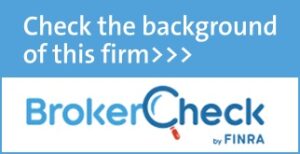
Mastering the Art of Debt Freedom
In a recent study on graduating medical students by the Association of American Medical Colleges, they found that 67% of students indicated they had some education debt with the majority of students holding a debt of more than $150,000. The survey also found that at least 20% had other debts on top of their education debts including car payments, credit cards, personal loans, and more.
The reality is that debt impacts nearly everyone, and how you manage your education and consumer debt can help you lower it faster, work towards growing your savings, and relieve you of some of the stress that comes with carrying debt.
The average debt held by different medical professionals varies significantly depending on position, location of employment, age, and other factors. Some of the average debt-to-income ratios for medical professionals are as follows:
New Doctors: Have an average student loan debt in 2024 of over $188,000, and an average income of more than S323,600 before taxes.¹
Nurses: Have an average student loan debt of over $40,600, and an average income of more than $80,600 before taxes.¹
Physician Assistants (PAs): Have an average student loan debt of around $112,500 and an average income of over $130,000.²
Radiologists: The average student loan debt is around $225,000, and an average income can easily top $400,000.³
Many medical professionals earn high incomes; however, they can also accumulate education and consumer debt which can be difficult to pay down. They may have mortgages, car payments, home and auto insurance, families to support, taxes due, and the list of expenses can seem to go on forever. Many medical professionals might also have to consider malpractice insurance, an essential according to the American Medical Association (AMA), as one in three physicians has been sued or experienced legal action against them under a medical malpractice lawsuit. Therefore, Physicians Thrive says the average annual malpractice insurance premiums range from $4,000-$12,000, though surgeons in some states pay as much as $50,000. It is crucial for medical personnel to manage their finances effectively, and work to master the art of debt freedom by clearing it off their list of responsibilities. Consider these financial strategies for getting on top of your spending and working to rid yourself of debt.
Create a budget
Track your income and expenses to identify where you may be overspending and identify areas where you could cut back. There are several budgeting strategies that you can explore that can help you work toward saving money that can instead be put toward paying down debt. These include:
- Calculate your income and make a list of your expenses.
- Set manageable savings goals and priorities.
- Help yourself manage your spending habits by trying the 50/30/20 rule. This rule involves dividing your after-tax income into three categories. These categories should be flexible – If your actual “Needs” amounts to less than 50%, consider increasing your savings percentage.
- Needs: 50% of your income put toward needs, such as utilities, groceries, daycare, etc.
- Wants: 30% of your income put toward wants, such as restaurants, date nights, trips, holidays, etc.
- Savings: 20% of your income put toward savings, such as investments, an emergency fund, and other savings options.
- Consider automating payments.
- Consult a financial professional to help you design a budget and strategy that aligns with your financial goals.
Pay down high-interest debt first
There are different strategies for paying down high-interest debt first. One popular method is the avalanche approach:
Debt Avalanche
- Borrowers make minimum monthly payments on all debts but put more money toward the high-interest debt to clear it off their books faster.
- Once the highest interest rate is paid you can work down to the next one etc.
- This method is beneficial as it helps pay off the costliest ones first, however, it might not be the approach that works for everyone, for example, those who have several accounts with the same interest rate.
Other strategies include:
Debt Snowball
Paying off debt in order of the smallest balance to the largest.
Debt consolidation
Taking multiple debts and combining them into a single personal loan with a fixed monthly payment. This strategy can help minimize the burden of high-interest charges and get a lower rate, but keep in mind that while debts are being combined and terms are being worked out, your credit score could temporarily take a hit.
Balance transfer
Moving your credit card debt to a balance transfer card which can give you the option to pay off your balance without the high interest rate.
Making more than just the minimum payments
Simply paying down more than the minimum payments can help you pay off your debt faster while accruing less interest.
Lower your overall debt
Along with paying down your high-interest debt, you also want to look at lowering your overall debt to keep your credit utilization ratio 30% or less. The balance you carry on revolving lines of credit such as credit cards is known as revolving debt. Generally, the interest rate is quite high and the more you use the higher your credit utilization rate will be, which impacts your credit score (see below).
Keep your credit score high
Managing your credit is critical to maintaining financial flexibility and potentially providing access to higher credit limits, insurance discounts, more manageable rental options, better terms for future loans, easier credit approval, more attractive housing opportunities, and more. Without a solid credit score, life can become significantly more difficult. This is an aspect of your financial life that you want to work hard on and manage carefully.
Ensure you have a manageable student loan repayment plan
Having a manageable student loan repayment plan can help make it easier to pay down over time and avoid some of the stress and pressure that comes with working to pay off debt.
Qualify for loan forgiveness, even as a physician
Depending on where you work, some physicians at eligible nonprofit or government organizations can have the remaining federal student loan debt forgiven after 10 years of repayment.
Apply for loan forgiveness
A financial professional can work with you to figure out if you qualify for a forgiveness program (also called Public Service Loan Forgiveness (PSLF) or some percentage of federal repayment that could potentially reduce the total amount owed.
Consider refinancing
A student loan refinance is when you move your loans from multiple lenders to one new, private lender to lower the interest rate or get better terms. If your loan is also a combination of private and federal, you may be able to refinance to a lower interest rate and save money. Generally, to qualify for a refinance you have to have strong credit and sufficient finances to be approved for a competitive rate or even fall under the umbrella of a refinance lender’s eligibility underwriting criteria.
**Keep in mind if you refinance a federal student loan, it could make you ineligible for other government finance programs such as income-driven repayments like SAVE (see below) or other student loan forgiveness options. If you still feel refinancing is the choice for you, follow these steps:
- Carefully research lenders
Not all refinance lenders are equal, manage the same types of loans the same way, or require the same criteria to accept you as a borrower. Learn about which ones have origination fees, pre-payment, or late fees. Read customer reviews. Seek out direct deposit discounts which may help to lower your interest rate but generally won’t lower your payment amount. However, be aware of the rule of having to maintain a specified amount deposited each month to avoid the discount being temporarily removed if the specified amount per month isn’t met. - Analyze the estimates and the impact on your financial situation
After discussing your options with a financial professional, decide on a lender. You also then have to determine if you want a fixed or variable interest rate. The next important decision is how long you want your repayment period to last (the shorter the repayment period, normally the more money you will save). - Select a lender and decide on the loan terms
Get help from a financial professional to calculate the loan terms that would work for you and your financial goals so you can have a personalized loan. - Fill out an application
Taking action is the most beneficial step toward mastering the art of debt freedom. Don’t wait to fill out an application if it could benefit you.
Saving on a Valuable Education (SAVE)
For new residents, income-driven repayment plans typically offer the most affordable options. SAVE is a type of new income-driven repayment plan that may help physicians save in the short- and long-term on their loans. SAVE helps to lower monthly payments and also may modify the way interest accrues.
The plan offers new residents monthly payments based on a smaller portion of the borrower’s adjusted gross income (AGI), generally around 5% to 10%. The SAVE plan, which is available to student borrowers with a Direct Loan in good standing, will replace the existing Revised Pay-As-You-Earn (REPAYE) plan. Borrowers who are already on the REPAYE plan will be automatically enrolled in the SAVE plan and their payments will automatically adjust with no action on their part.
Consider consulting a financial professional
We hope this information can help you move forward with your debt reduction strategy and help lessen some of the financial pressure and stress that comes along with it. Before you do anything, consider consulting a financial professional.
Most medical professionals have debt, but it doesn’t have to be suffocating or take half a lifetime to pay off. Creating the necessary debt management and spending strategies and designing proactive steps that work toward attainable goals can help you get on top of your debt once and for all. Consider taking the time to consult a financial professional who can sit with you and do a comprehensive analysis of your financial situation and help you create a customized plan.
Important Disclosures:
Content in this material is for educational and general information only and not intended to provide specific advice or recommendations for any individual.
All information is believed to be from reliable sources; however, LPL Financial makes no representation as to its completeness or accuracy.
This article was prepared by LPL Marketing Solutions
LPL Tracking #670011
Footnotes:
1 Laurel Road Financial Survey: Healthcare Professionals & Student Loan Debt
2 Physician Assistant Salaries, Debt Detailed | Physician Assistant Salaries, Employability | HealthLeaders Media
3 What Is the Average Radiologist Salary in 2024?
Sources:
Physician Assistants : Occupational Outlook Handbook: : U.S. Bureau of Labor Statistics
Physicians With The Highest Medical Malpractice Rates [2024]
Laurel Road Financial Survey: Healthcare Professionals & Student Loan Debt
The Current Cost of Medical Malpractice Insurance | Physicians Thrive
3 tips to effectively manage debt during physician residency | American Medical Association
idrfactsheetfinal.pdf (How the New SAVE Plan Will Transform Loan Repayment and Protect Borrowers)
Why Is Good Credit So Important? | Bankrate
The 50/30/20 Budget Rule Explained With Examples



